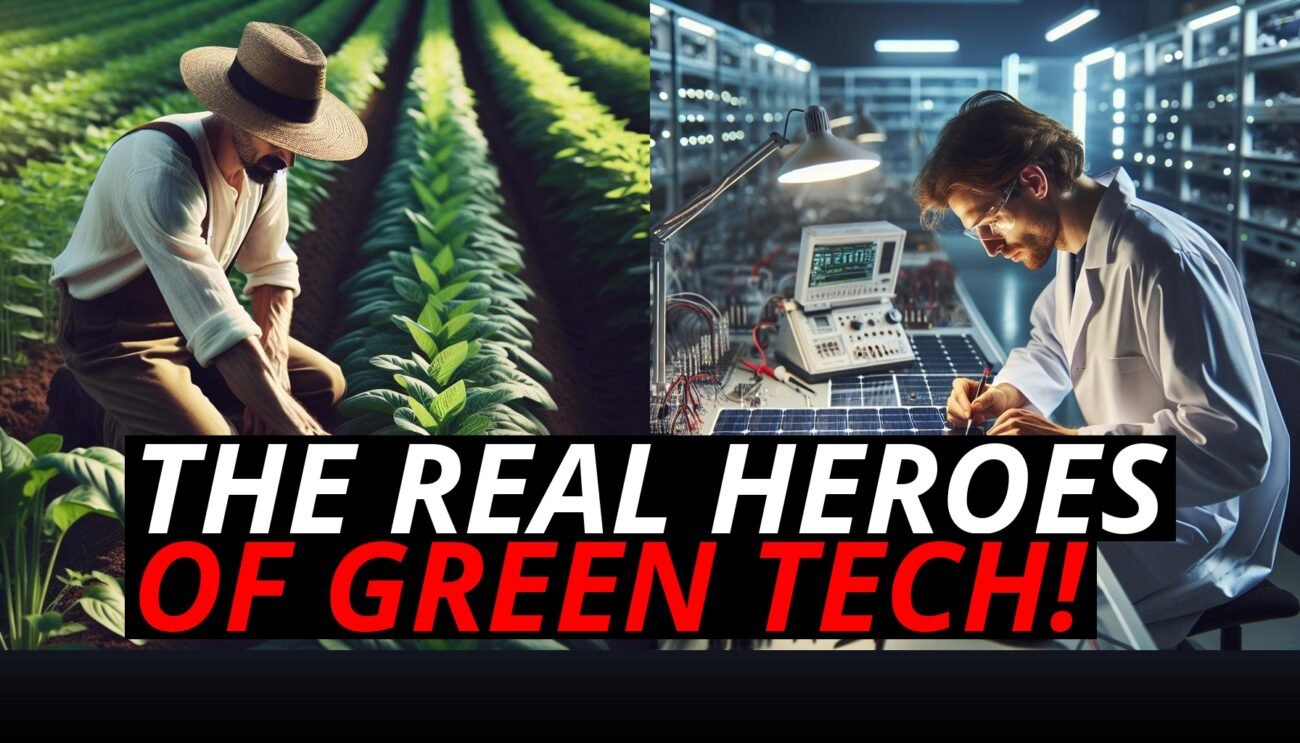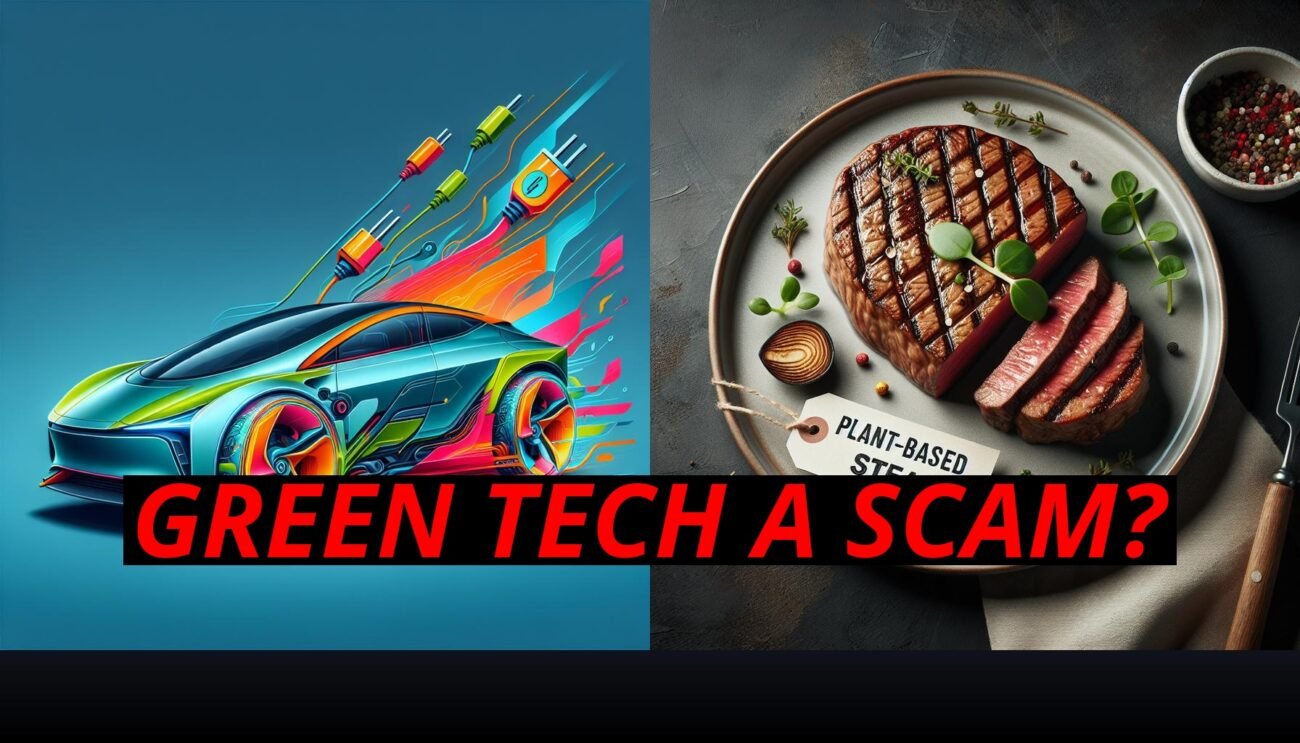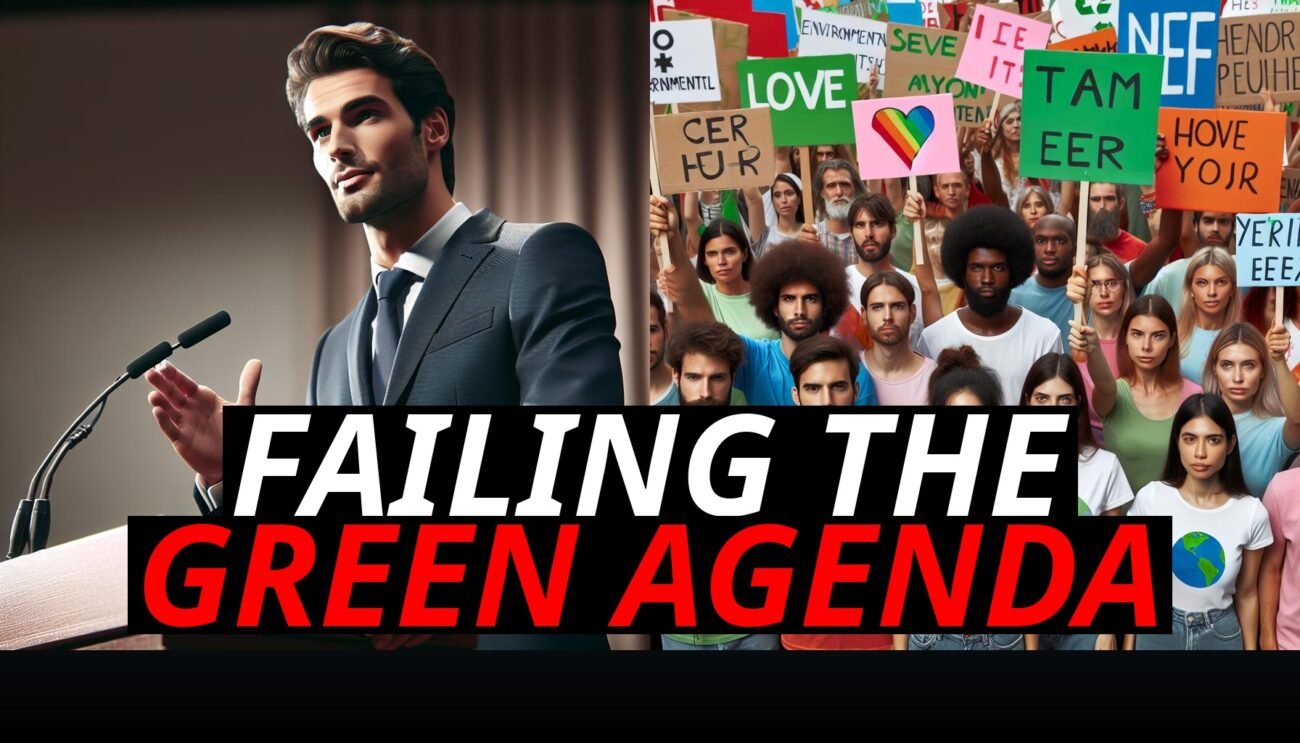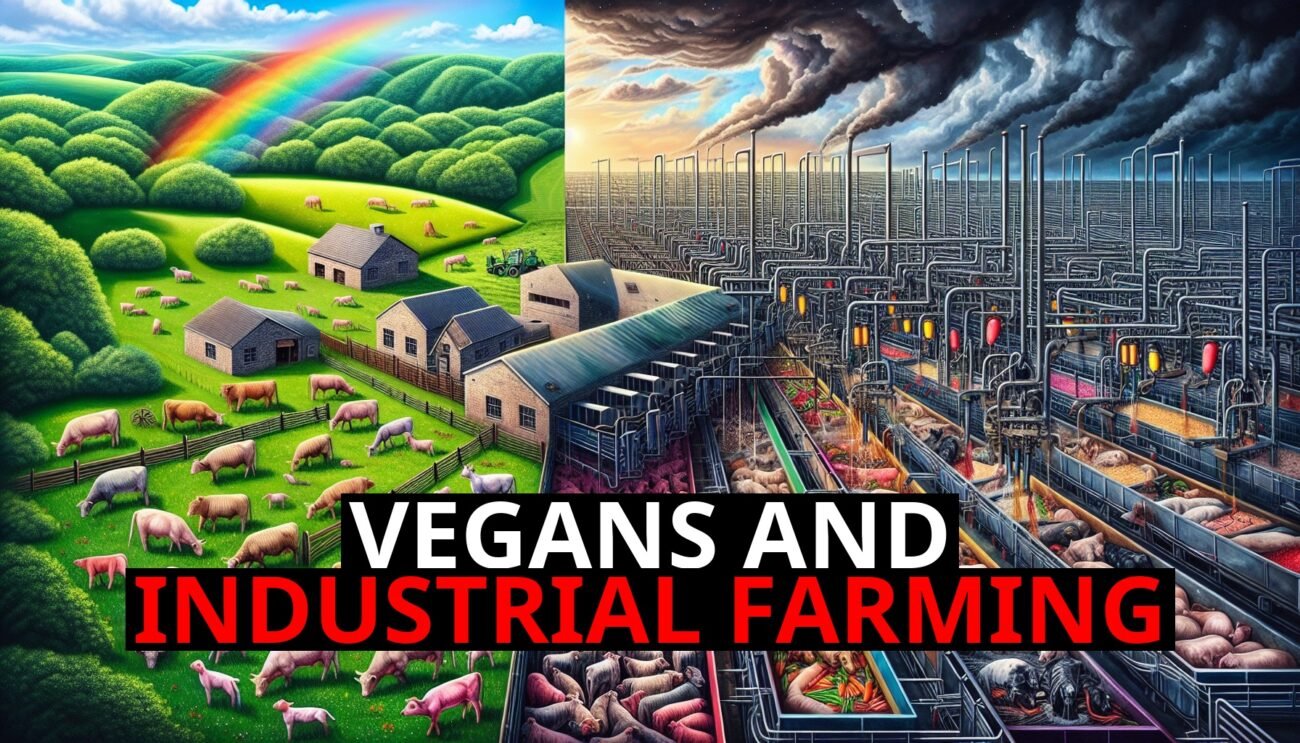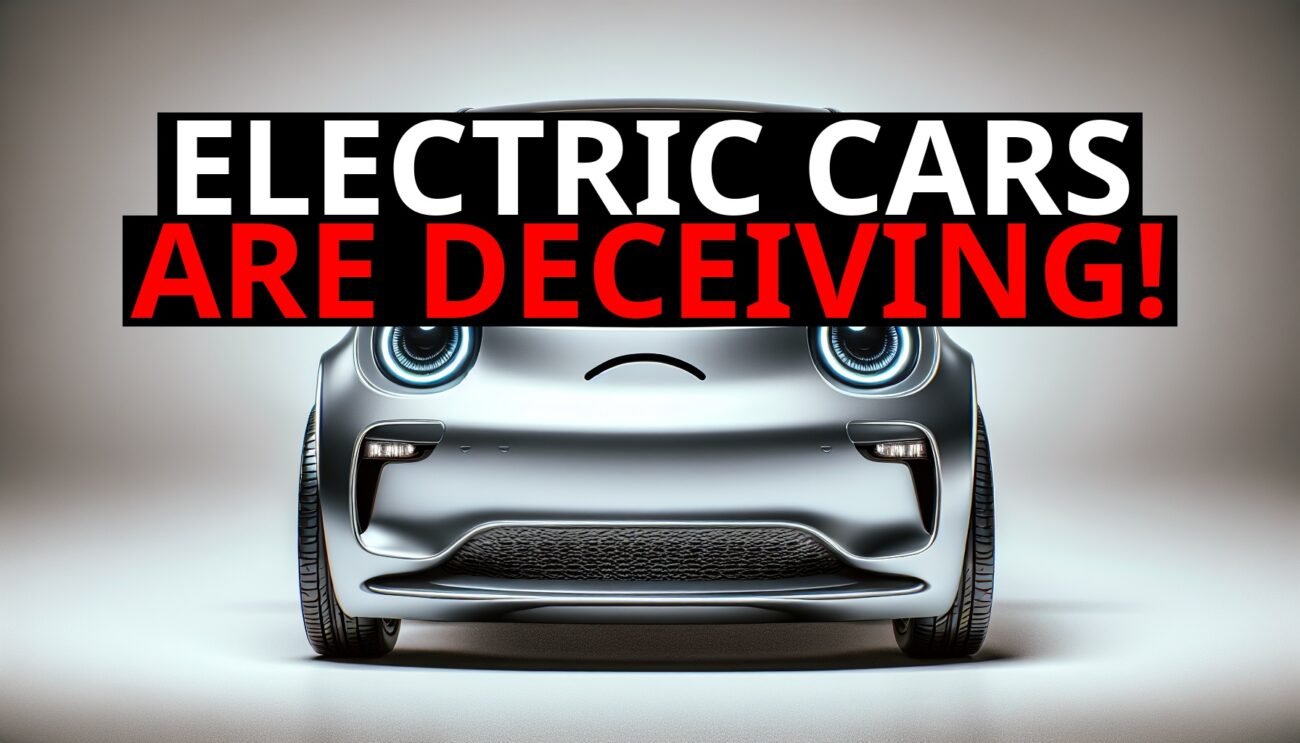Imagine a future where your plate is filled with plant-based meat alternatives, and your car runs quietly on an electric battery—all while the planet thanks you for your choices. Sounds like a green utopia, right? But what if I told you that both fake meat and electric vehicles (EVs), often hailed as the ultimate solutions to climate change, come with hidden environmental and ethical costs?
While these products may seem like eco-friendly alternatives at first glance, the reality is that the journey from farm to factory for fake meat and the production of EVs leaves a much larger carbon footprint than you might think. Let’s uncover the hidden costs behind these greenwashed solutions.
The Fake Meat Illusion: Not As Green As It Seems
Plant-based meat has exploded in popularity, marketed as a solution to combat animal agriculture’s environmental impact. From burgers to sausages, fake meat promises the same taste and texture of the real thing, with less guilt. But is it really as green as we’re led to believe?
Monocropping and Soil Depletion: Fake meat often relies on crops like soy and peas, grown on massive scales through monocropping. This farming practice, which focuses on growing a single crop over large areas year after year, leads to soil depletion and a dependence on chemical fertilizers. Monocropping degrades soil health, strips the land of nutrients, and leads to an increase in the use of pesticides. These environmental costs add up, turning fields once full of biodiversity into barren, chemically dependent landscapes.
Water Usage and Pesticides: Growing the crops needed for fake meat production requires massive amounts of water. In some cases, the water consumption for growing these crops rivals or even exceeds the amount used in traditional livestock farming. Additionally, monocropping encourages heavy pesticide use, which leads to polluted water sources, soil contamination, and harm to local ecosystems. While fake meat aims to be a more sustainable choice, the methods used to grow the ingredients can be just as damaging as the practices it’s meant to replace.
Processing: From Plant to Product: Beyond the farming stage, fake meat undergoes extensive processing to resemble real meat. These products are often packed with additives, artificial flavorings, and industrial processing methods to create that “meat-like” experience. The carbon emissions from processing and packaging plant-based products are significant, and the environmental benefits quickly start to shrink. In essence, fake meat is a highly processed product that, for all its green marketing, isn’t as eco-friendly as many assume.
Electric Vehicles: The Hidden Cost Of Going Electric
Electric vehicles are often positioned as the future of sustainable transportation, with promises of zero emissions and cleaner air. While it’s true that EVs don’t emit greenhouse gases while driving, there’s a side of EV production that many people overlook.
Lithium and Cobalt Mining: At the heart of every EV is a lithium-ion battery, which requires key materials like lithium, cobalt, and nickel. These materials are extracted from the earth through environmentally destructive mining practices. Lithium, often called “white gold,” is mined in salt flats in countries like Chile and Argentina, depleting local water sources and damaging fragile ecosystems. Cobalt, which is primarily mined in the Democratic Republic of Congo, has been linked to child labor, unsafe working conditions, and severe environmental damage.
High Carbon Footprint of Battery Production: Manufacturing EV batteries is an energy-intensive process. Mining, refining, and assembling the raw materials required for batteries generate large amounts of carbon dioxide. In fact, producing the battery for an electric vehicle creates a carbon footprint that can take years of driving emissions-free to offset. The more we push for EV production without addressing these upstream emissions, the more we risk simply shifting pollution from the tailpipe to the factory.
Battery Disposal and Recycling Issues: While EVs are touted for their potential to reduce pollution on the road, there’s a growing problem at the other end of the lifecycle: battery disposal. Currently, there are limited recycling facilities equipped to handle lithium-ion batteries, meaning many used batteries are ending up in landfills. These batteries can leak toxic chemicals into the soil and water, creating a new set of environmental hazards. Without a robust recycling infrastructure, the “clean” promise of EVs becomes questionable.
The Complex Supply Chains Of Green Products
One thing both fake meat and electric vehicles share is a reliance on complex, global supply chains that come with their own environmental and ethical costs.
From Farm to Factory: Long Distances and High Emissions: The ingredients for fake meat products and the raw materials for EV batteries are often grown or mined in one part of the world, refined in another, and finally processed or assembled somewhere else. These long supply chains require extensive transportation, which adds to the overall carbon footprint of these products. Shipping soy from the U.S. to be processed into plant-based meat in Europe, or transporting lithium from South America to battery factories in China, consumes vast amounts of energy, typically from fossil fuels.
Supply Chain Vulnerabilities: Beyond the environmental cost, the complex global supply chains for fake meat and EVs are vulnerable to disruptions. Whether it’s trade disputes, natural disasters, or pandemics, these supply chains can easily break down, leading to shortages, price hikes, and delays. Despite the high-tech image of these industries, their reliance on global logistics makes them far from sustainable.
The Disconnect Between Marketing And Reality
Both fake meat and electric vehicles are marketed as green alternatives—solutions to reduce emissions and protect the planet. But the truth is, the environmental benefits of these products are often overstated.
The Greenwashing Dilemma: Greenwashing, the practice of presenting a product as environmentally friendly without addressing its hidden costs, is rampant in both industries. Consumers are told that eating a plant-based burger or driving an EV is a way to reduce their carbon footprint, but they’re rarely informed about the environmental damage caused by the production and transportation of these products. The story we’re sold doesn’t always match the reality.
Oversimplified Solutions: The push for fake meat and electric vehicles is often framed as a simple solution to climate change, but the reality is much more complex. Replacing one industrial system with another doesn’t necessarily lead to sustainability. Real change requires rethinking how we produce food and energy—not just shifting from one resource-intensive system to another.
What Are The Real Solutions?
So, if fake meat and electric vehicles aren’t the perfect answers to sustainability, what are the alternatives?
Regenerative Farming and Sustainable Agriculture: Instead of relying on monocropping and highly processed plant-based meat, we should be investing in regenerative agriculture. This farming method focuses on improving soil health, increasing biodiversity, and reducing the need for chemical fertilizers. By supporting local, sustainable farms, we can create a food system that’s better for the environment and provides consumers with natural, healthy options.
Improving Battery Technology and Recycling: For electric vehicles to truly reduce emissions, we need better battery technology and recycling solutions. Investing in solid-state batteries could reduce the environmental impact of EV production by requiring fewer raw materials. Additionally, governments and companies need to invest in recycling infrastructure to ensure that old batteries are repurposed instead of ending up in landfills.
Localizing Supply Chains: By shortening supply chains and encouraging local production of both food and energy solutions, we can reduce the carbon footprint associated with transportation. Local energy grids, regional battery recycling centers, and community-based food systems can make a significant difference in lowering emissions and creating resilient, sustainable economies.
Conclusion: Rethinking Green Solutions
The promise of fake meat and electric vehicles as green solutions sounds appealing, but when you pull back the curtain, it’s clear that these products come with hidden costs. From destructive mining practices to soil depletion and water use, the production processes behind these “green” alternatives often cause significant harm to the environment.
If we’re serious about creating a sustainable future, we need to move beyond simple solutions and start addressing the complex realities of how we produce food and energy. That means investing in regenerative farming, improved battery technologies, and local supply chains that prioritize the health of the planet at every step—from farm to factory.


